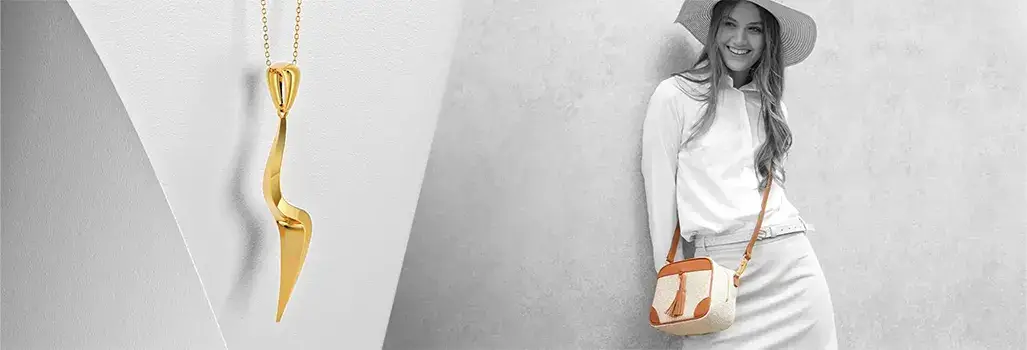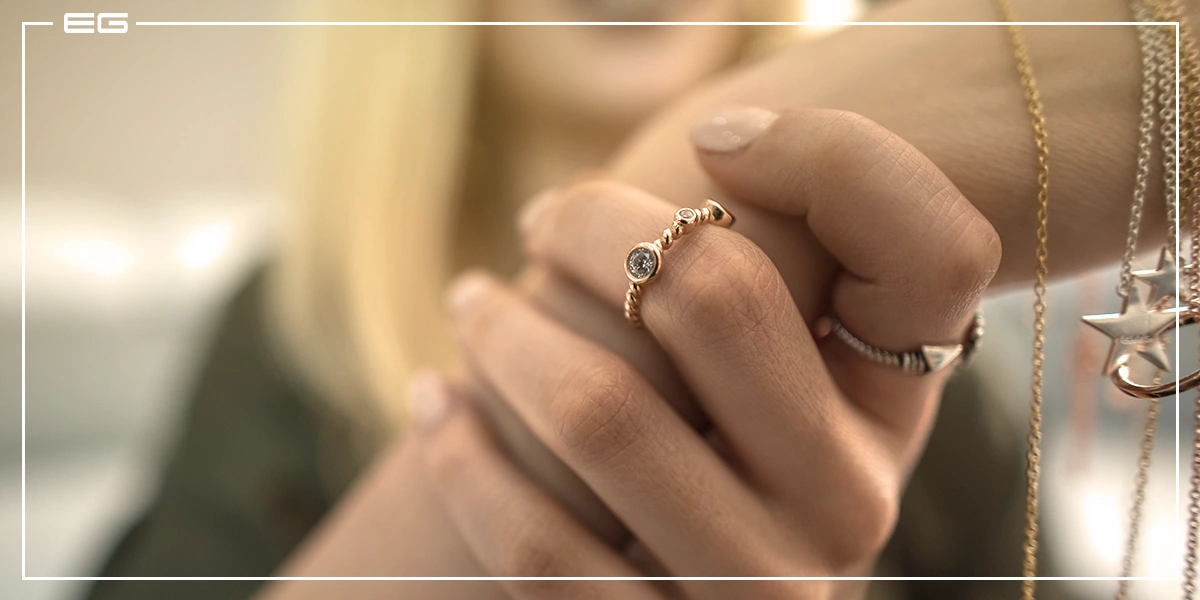در این مطلب خواهید خواند:
Hundreds of meters below the surface of the earth, under great pressure and unbearable heat, a precious stone called diamond is formed. Although the picture of this precious stone is known to be colorless, there are different types of diamonds that have different colors.
Natural Diamonds
Natural diamonds are among the most incredible natural stones which are seen in almost all rainbow colors. This beautiful gift of nature, can be of different components and thus present different colors.
Carbon is the most fundamental component of natural diamonds; however it takes different shapes as a result of special procedures. Although carbon can be found in different forms, diamond formation is a complicated procedure that puts the final product among the hardest stones in the world. Graphite, for instance, is made of carbon but it is so soft that we can use to write with.
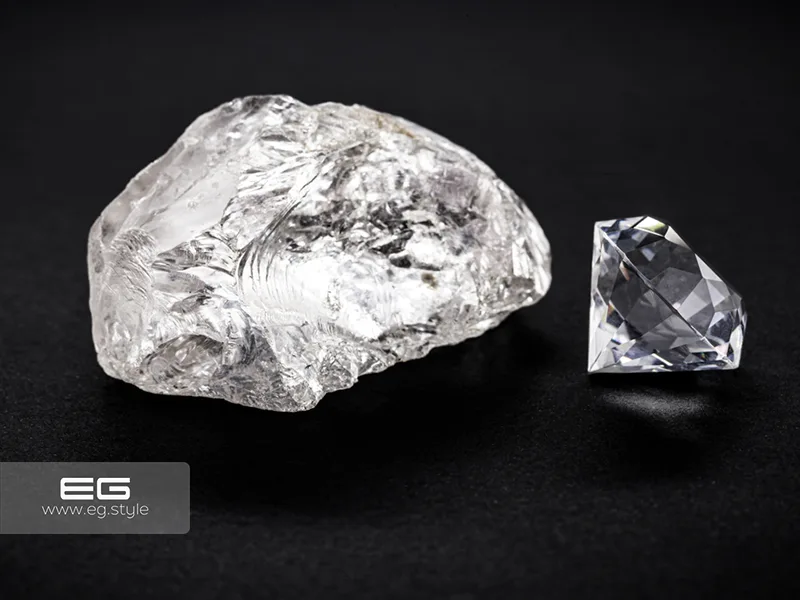
As the technology develops, new approaches are used for changing the color, brightness degree, and even improving the durability of natural diamond. However, many types of natural diamonds have different colors naturally. Studies indicate that diamonds are the only precious stones that are made of a single element. In fact, carbon forms 99.95% of diamonds components and the remaining 0.05% are not among the significant components of diamonds. These trifles are rare elements that mainly affect the color of diamonds.
Natural Diamonds in the Nature
“We have already discussed the formation process of natural diamonds, which occurs 90 to 120 miles below the ground surface. Furthermore, many pieces of diamond reach the surface of the earth as a result of landslide and are used for making pieces of jewelry. Some experiments show that there are some substances of the ocean crust among diamond components. As a result, diamonds have a totally different appearance compared to what we see in stores.
As a result of a collision between the asteroids and the earth, too much heat and pressure will be released which provides the necessary conditions for diamond formation. This is something that is frequently seen in some countries like Russia and specially Siberia.
There are types of diamonds that are not categorized as natural diamonds and are produced in laboratory conditions.
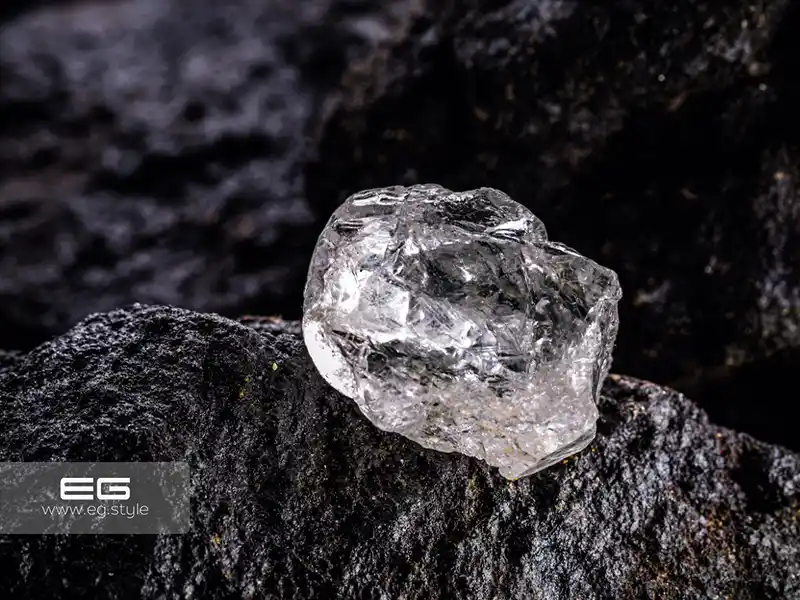
The Color of Natural Diamonds
The color of diamond is among the features that affect the beauty and thus the value of diamonds. As a result the GIA institute in America, has categorized diamonds in a range of D to Z, in which D to F refers to the absolutely colorless diamonds.
The next range of diamonds refers to those that are nearly colorless, and have an undertone that is detected only by professionals. In the range of K to M, detecting the undertone is still difficult for the naked eye. The next range that refers to a spectrum of N to R diamonds, consists of very pale diamonds that can be detected by the naked eye. Finally, the diamonds that are ranged in S to Z, are seen as yellow or light brown. The diamonds of D spectrum, have a pure and icy look as a result of which, they are usually more expensive and only 8% of the people around the world are capable of buying them.
The greatest category of natural diamonds in which no color is visible is the «F» grade, but in the subsequent grades there will be a slight yellow undertone. Besides, there are other special variables during the formation of diamonds like when non-carbon atoms get stuck, or a change in the amount of pressure both of which will lead to changes in this precious stone. As a result, diamonds with rainbow colors will be formed which are called «Fancy colored diamonds» that have fantastic colors. Many famous jewelry brands all over the world like Cartier, Tiffany, and Piaget have created great memorable designs using colorful diamonds.
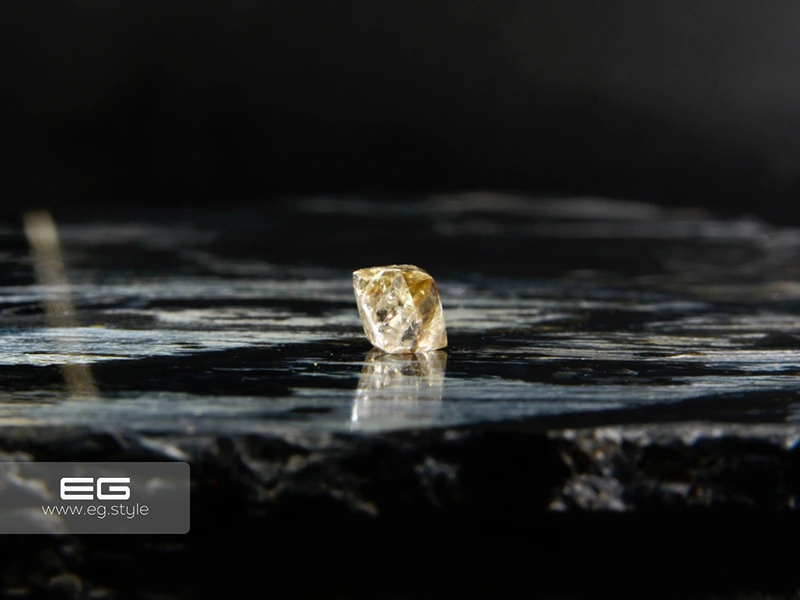
Yellow Diamonds
This type of diamond is more frequently seen in the nature and the only non-carbon element in it, is the nitrogen. In diamond categorization, it was already mentioned that diamonds referring to the range of Z, have enough nitrogen and that is why they are red. These diamonds exist in a range of yellow to brown and are of lower prices compared to blue and pink diamonds.
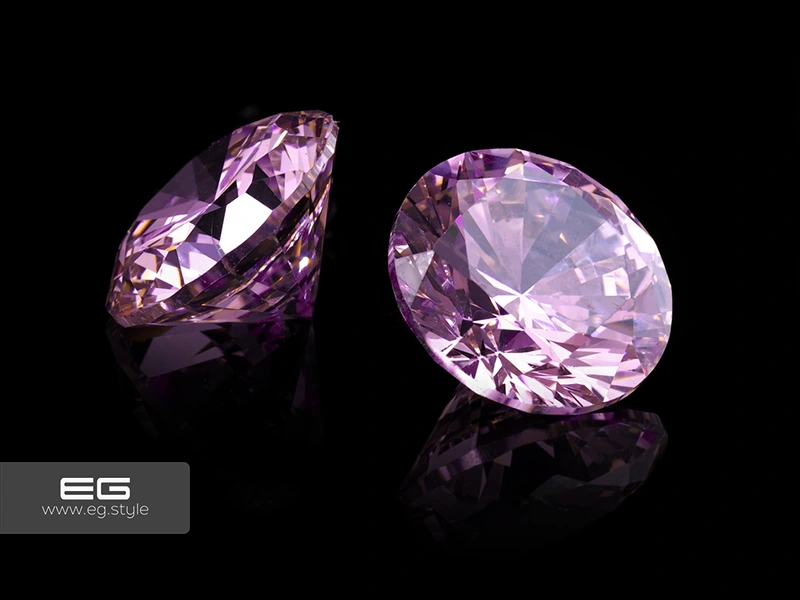
Pink Diamonds
This color of natural diamonds is the rarest and thus the most popular color of diamond which has a totally different formation process compared to yellow diamonds. It was already mentioned The formation of yellow diamonds necessitates nitrogen in diamond components.
A phenomenon that happens in formation of pink diamonds is «Plastic Formation» that happens when the crystalline structure of diamond is under pressure and red light will be reflected from it. The more the pressure, the pinker the diamond crystal will look. Although this beautiful and rare color makes pink diamonds unique, it reduces diamond’s brightness and pink diamonds are not usually categorized in higher ranks.
These diamonds are usually found north western regions of Australia, and they became even more valuable after the main pink diamond mine of the world was closed.

Green Diamonds
The formation of these diamonds sounds more attractive in comparison with other colors. The green color of these diamonds, is the result of natural decomposition of radioactive materials that collide the carbon atom electrons, as a result of which the green color will be formed. Green diamonds are the only types of diamonds that undergo a change of color after they are formed and are near the surface of the earth.

Blue Diamonds
Diamonds of this color are among the very rare types of diamonds and as a result of the enclosure of the boron element in the diamond crystal, yellow light is absorbed and blue light is reflected. The main reason for different ranges of blue color is the concentration level of the boron element. One of the main characteristics of the blue diamonds is the formation of this type of diamonds that happens somewhere 4 times deeper than where other types of diamond are formed and reach the surface of the earth as a result of the movements of the tectonic plates of the earth.
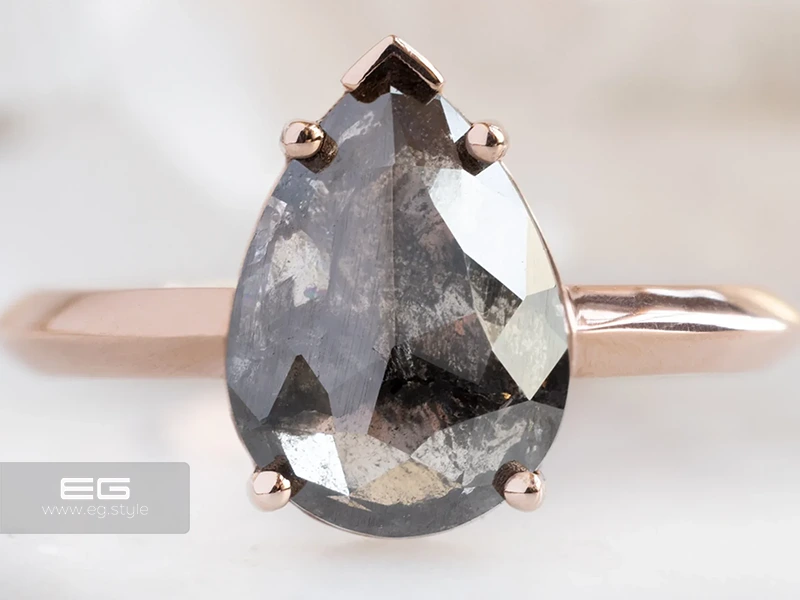
Black Diamonds
You may think that black diamonds are black due to pollutions in the diamond crystal. However, the black color is a result of little amounts of iron and graphite in the diamond structure. Despite other types of diamond, this type of diamond is not bright and looks matte. Still, with regard to the vulnerability of this type of diamonds and its low resistance to cut, they are usually used for industrial purposes. Taking a close look at the black diamond stone, you will notice very small holes which have formed during the diamond formation process.
Natural Diamonds Grading Criteria
According to the categorization of GIA, there are four main criteria, all of which start with letter C, and are used for evaluating the diamond quality.
Cut, that refers to mastery in cutting the diamond
Clarity that is associated with the brightness of the diamond crystal
Color that refers to the color of diamond
Carat that is associated with the weight of the diamonds
In the following we will discuss these criteria more closely
Diamond Cut
Cut criteria refers to how the diamond reflects light from different angles. A piece of diamond that has a standard cut has between 57 to 58 flat, angled, symmetric surfaces.
The surfaces and angles of the diamond play are the immediate results of good cut. The angles, size and their relationship with each other has an important role in how the diamond shines.
How much a piece of diamond shines depends on many many factors, among the most important ones of which, we can mention white light reflection quality, light distribution manner and the dark space within the stone (which looks dark due to the reflection of inner light).
The cut criteria evaluates the quality of the cut performed on the diamond, and regardless of the cut type, it assesses the diamond’s appearance after being cut. The most familiar type of diamond cut is the «Brilliant» Cut, which is so famous and frequent that sometimes people use the words brilliant and diamond interchangeably.
Diamonds have different types of cuts, each of which has its own name. Twelve famous diamond cuts are as follows:
Princess Cut
Emerald Cut
Oval Cut
Radiant Cut
Ascher Cut
Marquise Cut
Pear Cut
Cushion Cut
Heart Cut
Trillion or Trilliant Cut
Old Mine Cut
Baguette Cut

Diamond Brightness
Diamond Brightness is among the most important features of it. GIA institute ranges diamonds in a range between «flawless» which refers to pieces with no impurities to those which had a degree of impurities titled as «included».
Diamond Weight
Natural diamond weight is the last criteria in evaluating pieces of diamond which is also ranked as the least important criteria. Although the weight is an important factor in determining the value of diamond, color, clarity, and cut are more important factors. The biggest diamond that has ever been found, is a diamond weighing 3.106 carats titled as Cullinan Diamond.
Good News for Those Born in April
When it comes to birthstones, people wish to know their own birthstones. According to a previous EG article on birthstones, the GIA institute has assigned diamonds for those born in April. April corresponds to Farvardin 12th until Ordibehesht 10th in the Jalali calendar. The beautiful stone is of several properties and many people in the far past believed that having diamonds with them would brave them power and courage. If you like to know about precious stones, don’t miss EG’s article on it.
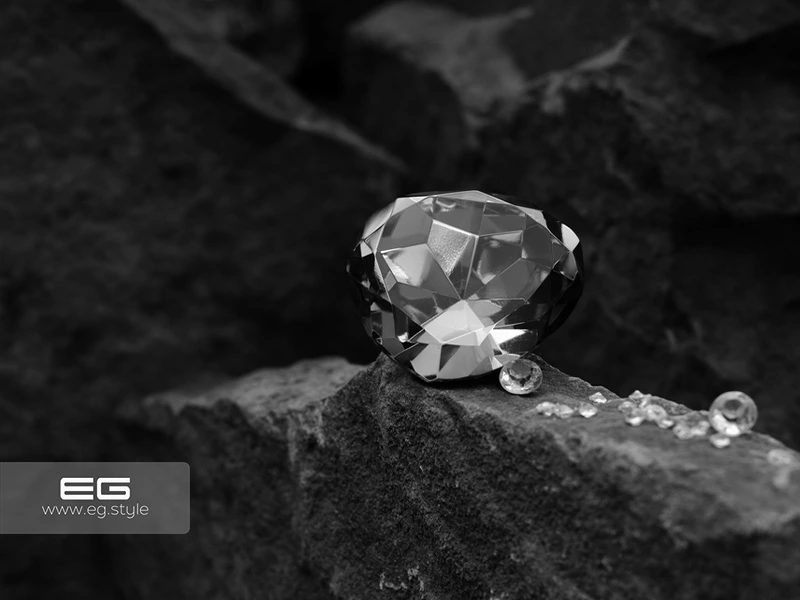
Conclusion
In this article, we discussed natural diamonds and how they are formed. The precious gift of the nature that is formed deep down in the earth and is seen in different colors, is very hard and is just made of carbon. The variety in diamond colors refers to the diamond components. Diamonds exist in all rainbow colors and to evaluate their value, there are 4 main criteria suggested by GIA. We suggest you visit EG brilliant jewelry collections.
